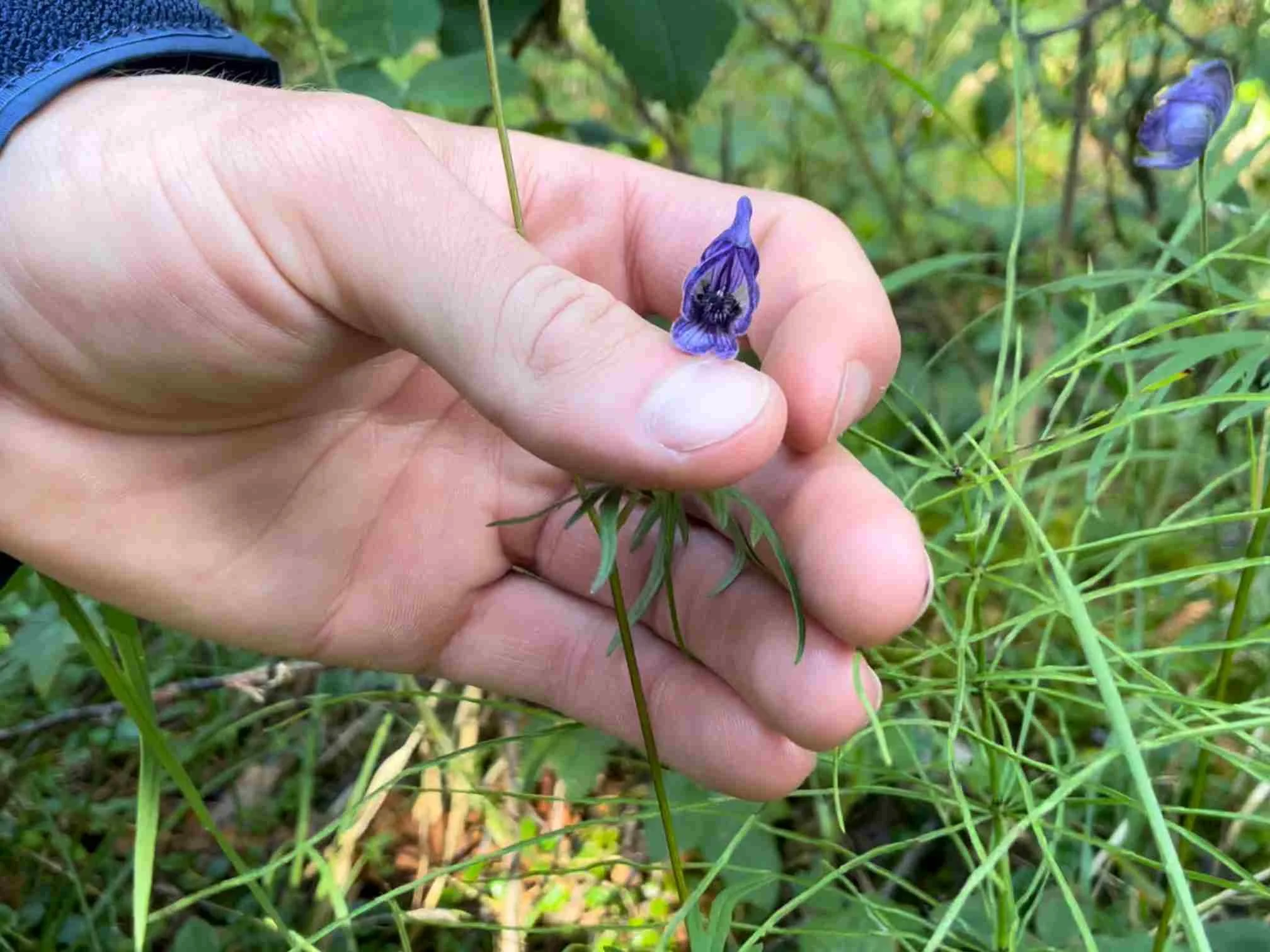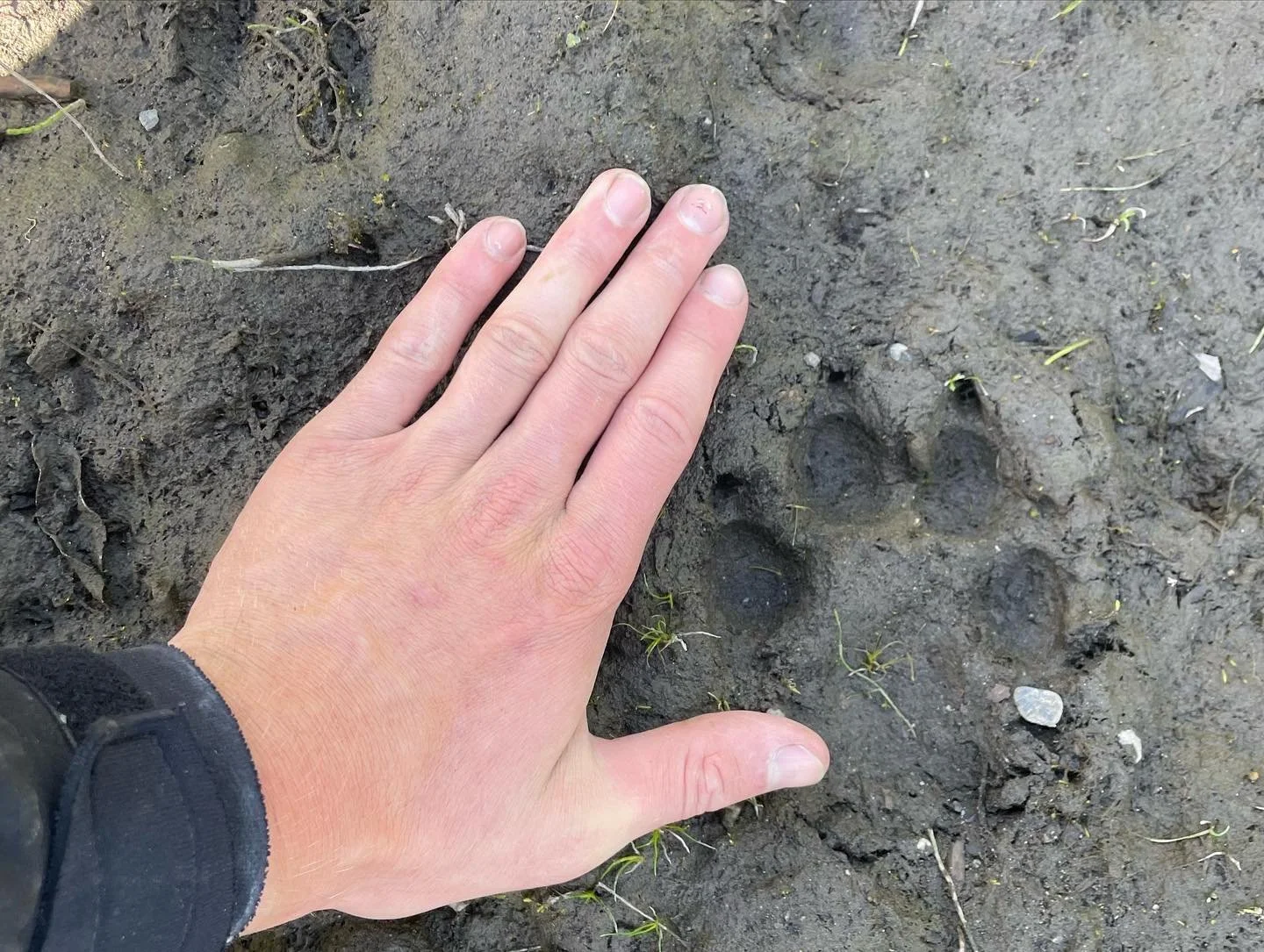Monkshood Alaska: The Beautiful Purple Flower of Denali
As you’re walking through the boreal forest of Denali, there are many flowers that will to catch your eye. However, one of these stands out, and not just for its beauty. The deep, striking purple hoods of Aconitum, often called monk’s hood or wolfsbane, is hard to miss among the tall grasses or scraggly dwarf birch populating the forest floor. While Alaska monkshood is undeniably beautiful, this plant also has a storied history, and contains toxins rivaled only by that of the infamous water hemlock. In this article, we will unpack both the mythical history of wolfsbane, as well its botanical reality.
Monkshood Flower Alaska
Monkshood Alaska Distribution
Monkshood Alaska distribution is extensive - it can be found across the entire state. Alaska monkshood prefers well drained and evenly moist soils, especially those rich in humus. often being found in subalpine areas. You will likely see it growing on rocky slopes, alpine tundras, along river banks, or in meadows.
Alaska monkshood can look different depending on the region of Alaska you’re in. In coastal Alaska, monkshood grows taller and boasts larger flowers, while interior Alaska monkshood looks small and fragile. These monkshood Alaska variations were once thought of as separate subspecies, but have since been accepted as the same.
While the aforementioned variations are not separate subspecies, there are actually two different monkshood Alaska species to be found. One, Aconitum maximum, has limited range, and is primarily found on the eastern end of the Aleutian islands. It is also scattered among the middle and western regions of the Aleutians with less frequency. The other monkshood Alaska species, Aconitum delphiniifolium, is more widespread throughout Alaska, and can be found in both the coastal and interior regions of the state. Its distribution overlaps with A. maximum in the Aleutian island chain, but is the only species to be found in mainland Alaska.
Monkshood Alaska Species Differences
A. delphiniifolium and A. maximum harbor a few visual differences that can help you tell them apart. The first and most obvious is flower color. A. maximum flowers only come in one hue; blue-ish purple. The flowers of A. delphiniifolium on the other hand come in several hues; purple, white, yellow, blue, or sometimes even greenish purple. White monkshood flowers are quite rare, and they have only been found in the Bering Strait.w
One of the largest differences between the two species is their leaves. A. delphiniifolium has far fewer leaves than A. maximum, and what leaves it does have are smaller and narrower. The leaves of both plants consist of five lobes, separated again into three smaller lobes. These lobes are very narrow in the case of A. delphiniifolium, but are significantly wider in the case of A. maximum.
The Mythical History
Most of the widely known mythology around monkshood is European, and centers around the European species of the plant, A. napellus. Monkshood is featured as far back as ancient Greek mythology. It was said that it would sprout where the three-headed dog, Cerberus, drooled. Ancient Greece was also where monkshood got the name wolfsbane, as poisoning bait with the plant was a common practice for hunting wolves. This method of hunting fell out of popularity, but the name has persisted to this day.
The connection between wolfsbane and wolves persisted through the Middle Ages as well, as it was frequently planted to ward off both werewolves and normal wolves. Some also believed that touching wolfsbane on the night of a full moon would shape-shift the toucher INTO a werewolf. Medieval doctors prescribed people who thought they were werewolves doses of wolfsbane to ward off the condition. Unfortunately, these doses were usually fatal due to the extremely toxic nature of the plant.
The Botanical Reality of Monkshood in Alaska
Monkshood’s toxicity isn’t only the stuff of legends. One flower is generally enough to kill an adult, and even touching the roots can lead to headaches, numbness, or worse. It is fast acting, and when a fatal dose is ingested it usually results in death within only two to six hours. With larger doses, death is said to be almost instantaneous. Monkshood contains several alkaloid toxins, the most prominent of which is aconitine, its namesake. It is also known to contain mesaconitine and hypaconitine. The poison can cause paralysis, ventricular arrhythmia, and heart failure. Not a fun combo if you ask me!
Like many poisons, monkshood has also been used as a medicine. In traditional Chinese medicine, it was used as a pain reliever and fever reducer. It was even stocked in 19th-20th century pharmacies. Unfortunately, getting the right dose was difficult with the process of repeated soaking and boiling required to leach the toxins, so its use as a medicine has led to many accidental poisonings. Long story short, don’t try to make your own monkshood concoction. Heck, I’d say just stay away from it altogether!
Now onto the less gruesome side. Monkshood is widespread across the northern half of the globe, including Alaska and, of course, Denali. Its striking purple blooms persist much later into the season than most other perennial flowers. The flowers themselves are pollinated by long-tongued bumblebees. The nectar in the flower is located at the top of the “hood,” and smaller bees lack the strength to push in far enough to gain access. Some bees will bore through the top of the hood to reach the nectar, but this is rare due to the natural deterrents Alaska monkshood has developed for these pollinators.
Some Other Interesting Facts About Monkshood
Alaska monkshood was used by the Alutiiq people as a poison when hunting whales
Pope Clement VII intentionally poisoned prisoners with monkshood in order to test a cure. The prisoner who was administered the cure recovered, while the one who was not died a horrific death.
In 2021, the president of Kyrgyzstan suggested wolfsbane as a cure for COVID-19, and it resulted in at least 4 people being hospitalized after ingesting the plant.
It has been suggested that Socrates was poisoned using monkshood.
Monkshood was used by the Nazis in WWII in hollow-tipped bullets as an experimental poison
References:
Monkshood flower Alaska description, distribution, and mythology: Lee Petersen
Alaska-specific monkshood information: Anchorage Times
Distinguishing different monkshood flower Alaska species: Katie Kokx



